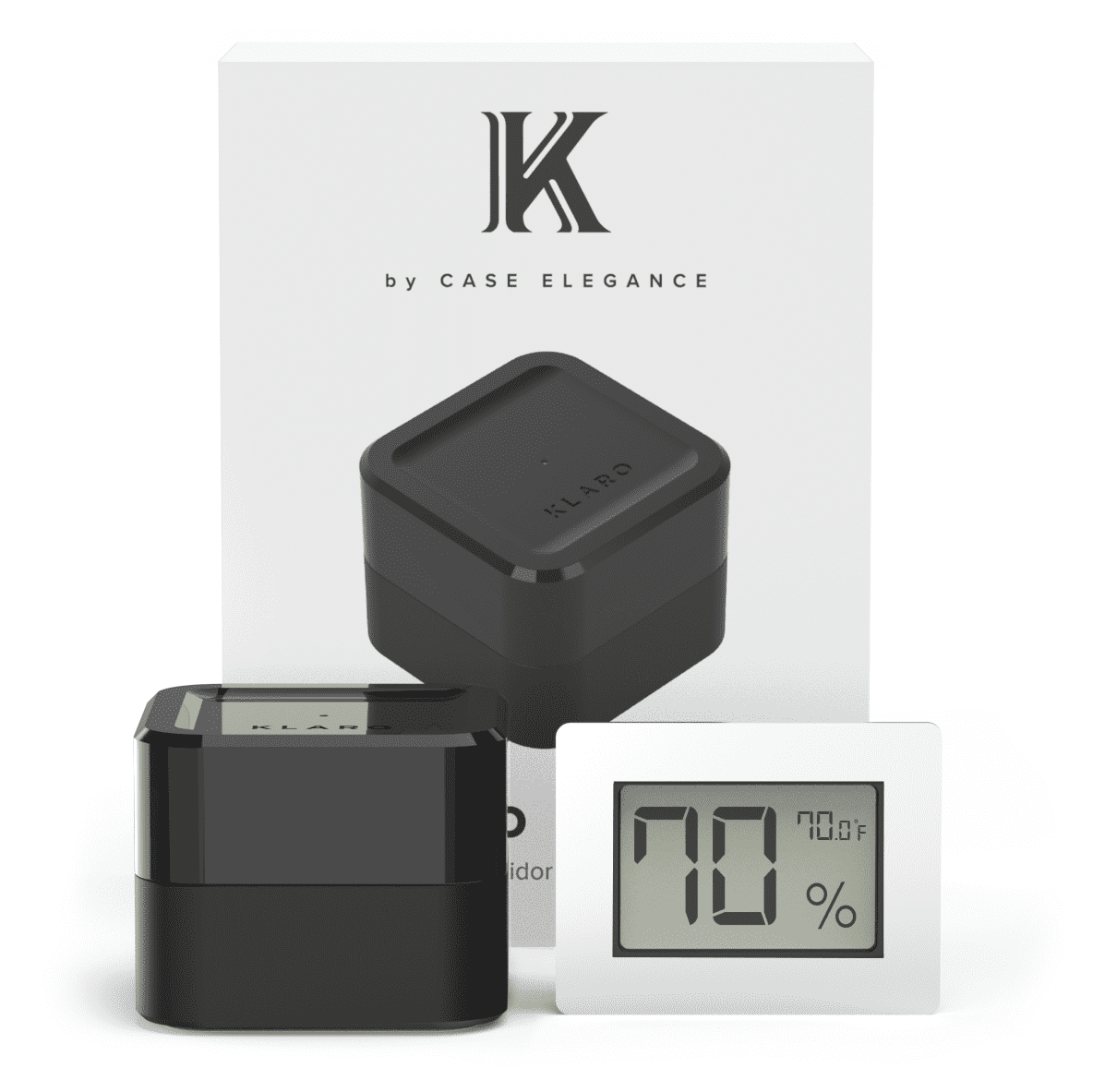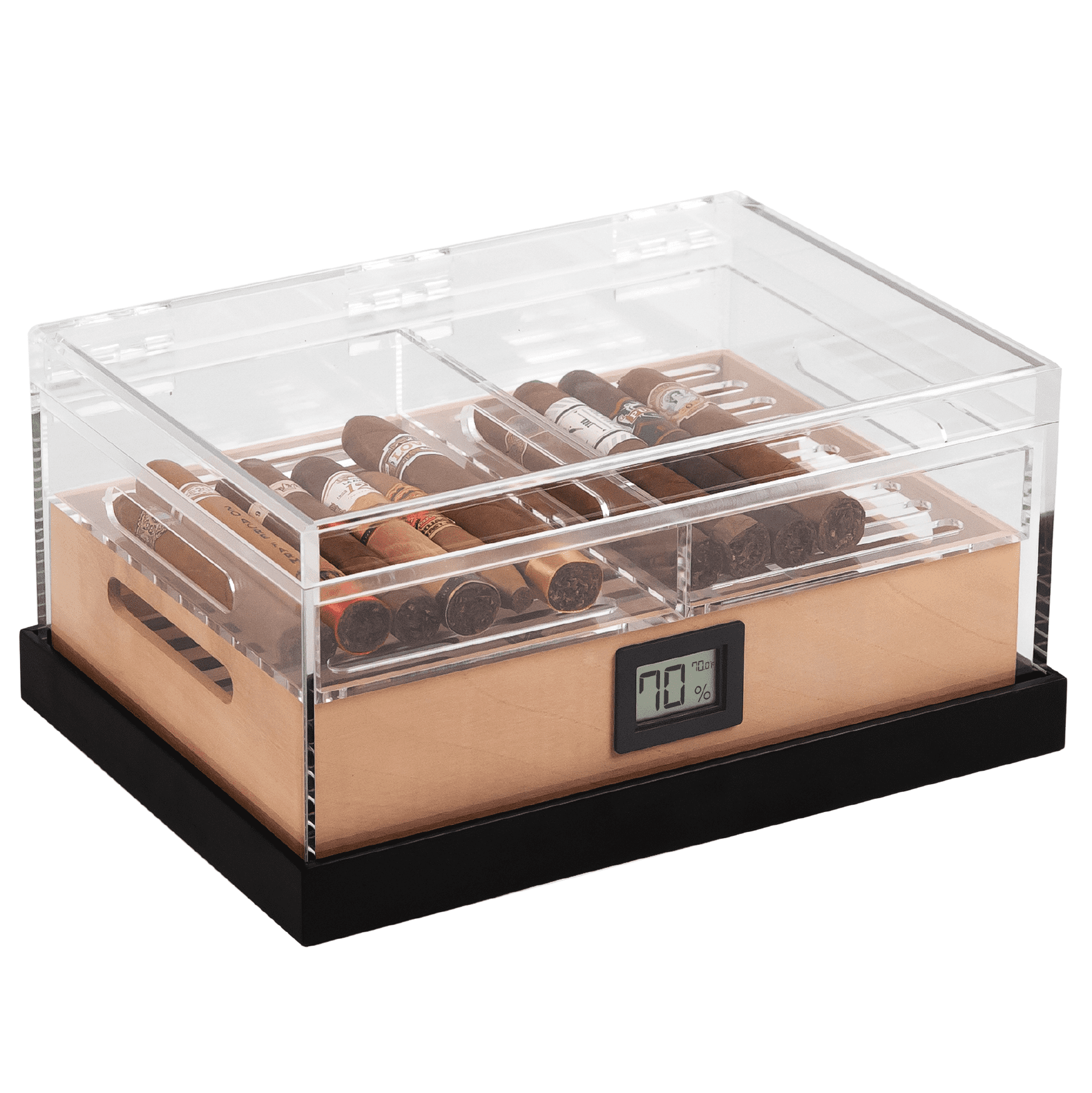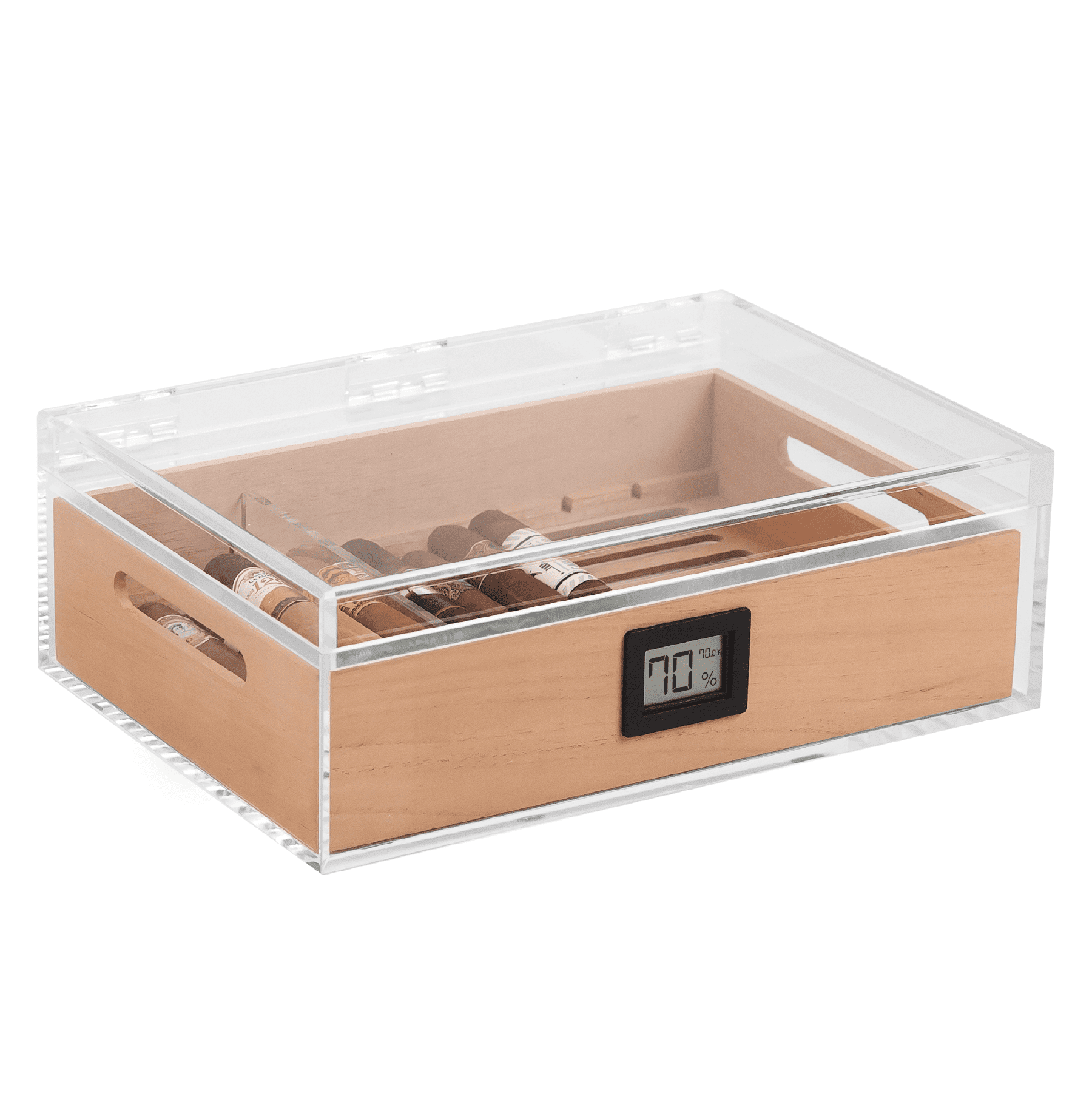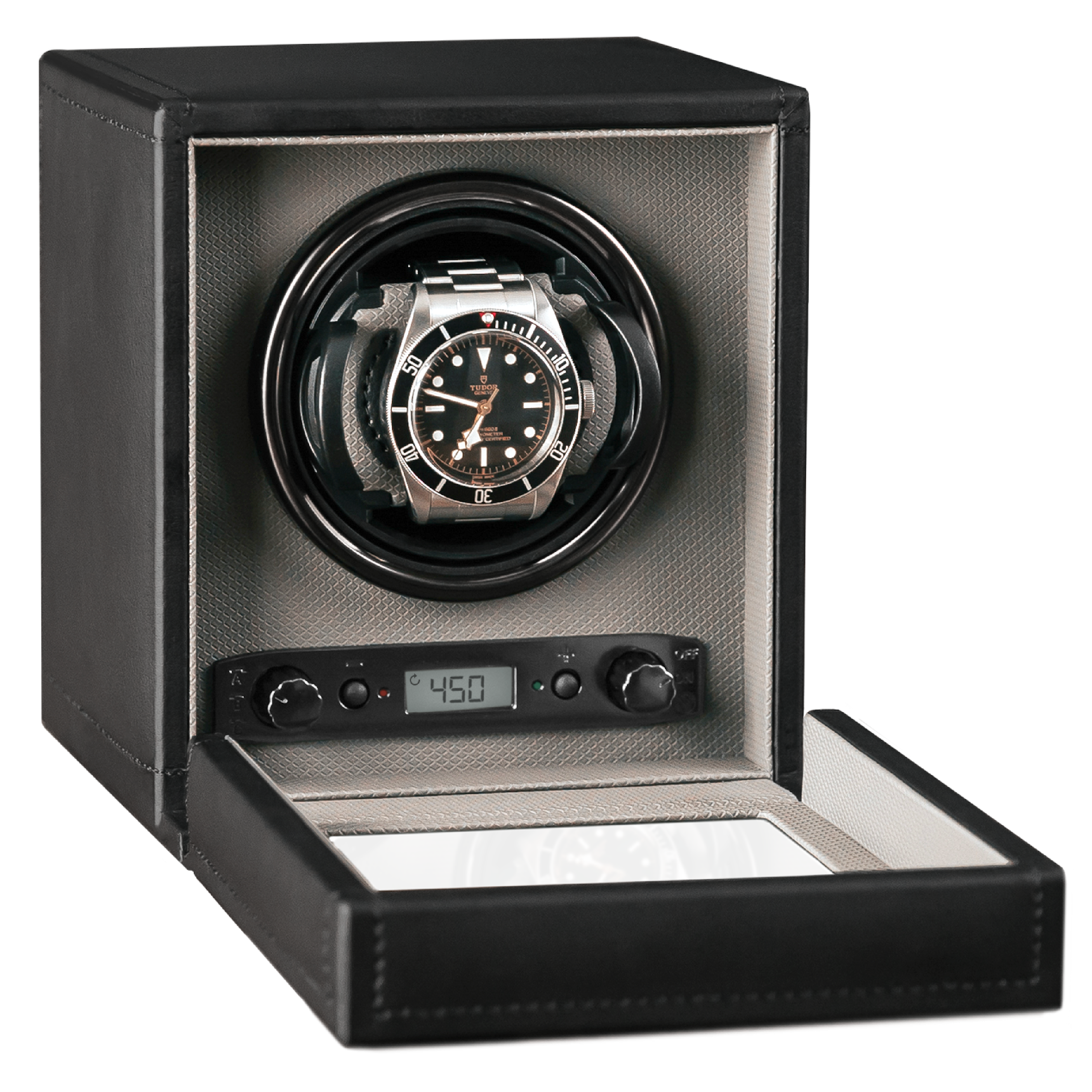As your knowledge and taste for different types of cigars grows, so too does your home cigar collection. After all, experimenting with different tobaccos and types is part of the fun. One of the benefits to owning a large humidor–or several humidors–is not worrying about whether you have room enough to buy a new brand or type, and you can collect without too much discretion.
But at what point does your cigar collection grow to the point that you require a second or third humidor? Or is another humidor really the best option?
As your cigar collection grows–and shows no signs of slowing–you might need to reconsider your approach to adequate storage options. In the case of those who age cigars, there’s even more appeal for a larger cigar storage option. (Or at least a designated humidor for aging).
A cigar cabinet or walk-in humidor are both worthwhile considerations as your cigar collection grows into the hundreds. But understand the purpose of a cigar cabinet–including the benefits and downsides–before you invest in a bulk-storage option instead of additional standard humidors.
What is a cigar cabinet?
Cigar humidors work by regulating the temperature and relative humidity with the help of Spanish cedar construction, an accurate hygrometer, and some form of hydration system. These work in tandem to absorb or release moisture into the air to keep cigars at a 12-15 percent moisture level. Most humidors can store between 25-100 cigars.
And if you want to store more than that? Well, enter the humidor cigar cabinet. Cabinets operate much the same way as humidors, but on a larger scale. They typically include double-doors that swing open to reveal multiple levels of storage. In some cases, cabinets will include drawers–but this design is typically not recommended given the difficulty in distributing humidification between enclosed drawers.
Cigar cabinets can accommodate both private and commercial uses. And their price increases with their ability to adequately control temperature and humidification levels. But otherwise, they accomplish the same goal as humidors.
The main difference between humidor boxes and humidor cigar cabinets is quantity.
Quantity
When you overload your humidor with too many cigars, you risk diminishing the humidor’s ability to regulate air temperature and relative humidity. The more cigars you store, the more moisture they absorb, and that can drain your hydration system and influence the humidity beyond what the humidor can regulate.
A cigar cabinet has the capacity to store a higher volume of cigars without compromising the relative humidity or temperature–even as you add newer cigars or re-stock with high quantities. Cigar cabinets can hold anywhere between 600-4000 cigars. For the cigar collector who is just barely exceeding their humidor’s capacity, the cigar cabinet is a significant upgrade.
Cost
While you might expect to pay hundreds of dollars to buy a good desktop humidor, a high-quality humidor cigar cabinet will potentially cost thousands. You can expect to pay between one to four thousand dollars for a cigar cabinet worth its salt.
Because cigar cabinets are so large, they require a sufficient air distribution and humidification system that can ensure an even, consistent flow of air and moisture. And in addition to the humidification system, cigar cabinets require a lot of Spanish cedar for construction for each of the shelves. So the price has to do with both the construction and materials required to make a cigar cabinet.
The problem is, not all cigar cabinets hold themselves to such a high quality standard.
Quality
If cost isn’t a concern, how do you know which is a better option for storing cigars in terms of quality? That depends on the overall construction of your cigar cabinet. And there are two main factors that determine how well a cabinet will work: its humidifier and its construction materials.
Many lower-quality cabinets contain shelves made from medium density fiberboard (MDF), which is hybrid material created from wood residuals (sawdust) and wax or resin. This material is a far cry from the Spanish cedar that you’re used to, and MDF will actually mold once exposed to high humidity levels over time.
Cabinets are a great alternative for size and space, but that makes their construction all the more important.
The second significant factor to a good cigar cabinet is its humidification system. Due to their size and height, cigar cabinets require an active humidification system to effectively distribute the correct humidification levels. Some items to consider in an active humidification system:
- An air system to direct airflow in the humidor.
- High humidification performance. (it must be able to restore humidification levels after opening).
- A fast-responding, reliable sensor/hygrometer.
- Air circulation.
Out of these four, air circulation can be the most difficult to achieve with a cigar cabinet. The construction of cabinet must allow for airflow to distribute evenly to maintain equal humidification levels across different heights.
While humidity control is easier to accomplish with desktop humidor boxes, overloading a humidor can have an equally dismall affect on your cigars. Some attempt to solve the capacity problem by stacking cigars in a humidor–but that comes with risks.
Cigar rotation in a humidor box can help evenly distribute humidification. But a unique process referred to as “marrying” can occur when you stack or store cigars in the same enclosed space. Marrying happens when oils and aromas from different cigars merge together, slightly changing the smoking experience. If you’re using a small humidor, and aren’t aging your cigars for extended periods of time, this shouldn’t be too much of a risk. Unless you smoke flavored cigars.
Flavored cigars will have a stronger likelihood of marrying into the other traditional cigars in your humidor box. In this case, a humidor cabinet might offer a bit more space. But, you’re still better-off using a separate humidor altogether if flavored cigars are a regular option, as flavored cigars can even affect other cigars in a cigar cabinet.
Humidor Options
If you’re considering a cigar cabinet, make sure you’ve explored all your regular humidor options before footing the bill for a cabinet or walk-in humidor. For example, the Octodor Glass Top Humidor by Klaro can store up to 100 cigars, depending on type, and still manages to effectively distribute humidification levels without stacking cigars.
Your other option includes owning multiple humidors of different types and styles, and even then you would save money that you would be spending on a cabinet. With multiple humidors, you can vary humidification levels for different types of cigars. This is also helpful when aging certain cigars.
Usage
So what situations would a cigar cabinet be appropriate? If you commonly store several hundred cigars, a walk-in humidor or a cigar cabinet might be a good option, even given the high cost. Let’s be honest: there’s definitely a man-cave appeal to having a large, well-designed wooden or glass cabinet just to house your cigar collection.
Beyond the man-cave, commercial use of a cigar cabinet makes a lot of sense for small businesses–especially if cigars aren’t their main draw. Commercial cigar cabinets allow for attractive, bulk cigar storage, and these cabinets can be located conveniently in a brick-and-mortar storefront.
But for most home cigar enthusiasts, the humidor cigar cabinet risks overkill. It’s somewhat rare to own a collection large enough to meet the minimum requirement of a cabinet, though those collectors do exist. But for both humidor boxes and humidor cigar cabinets, the primary object should be quality.
















